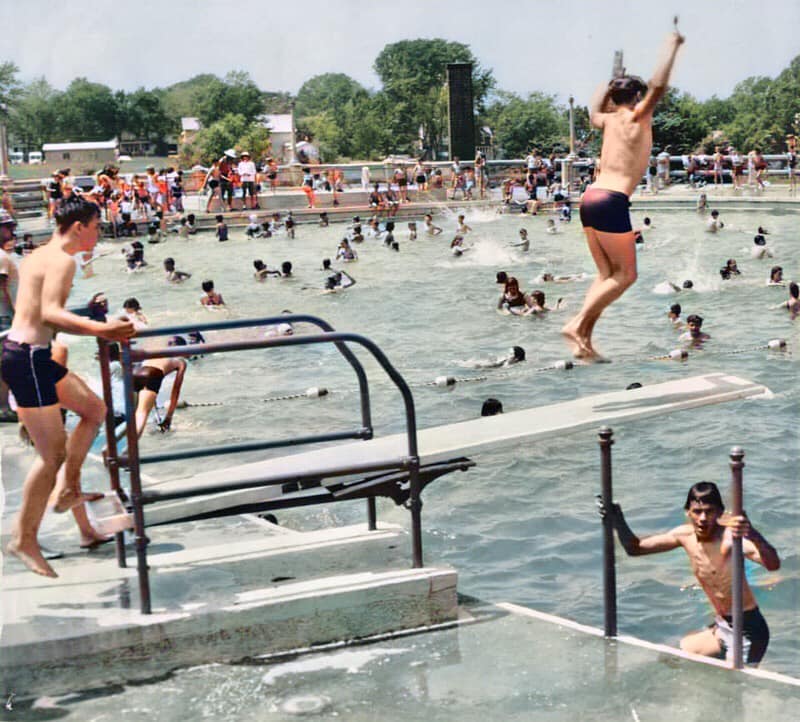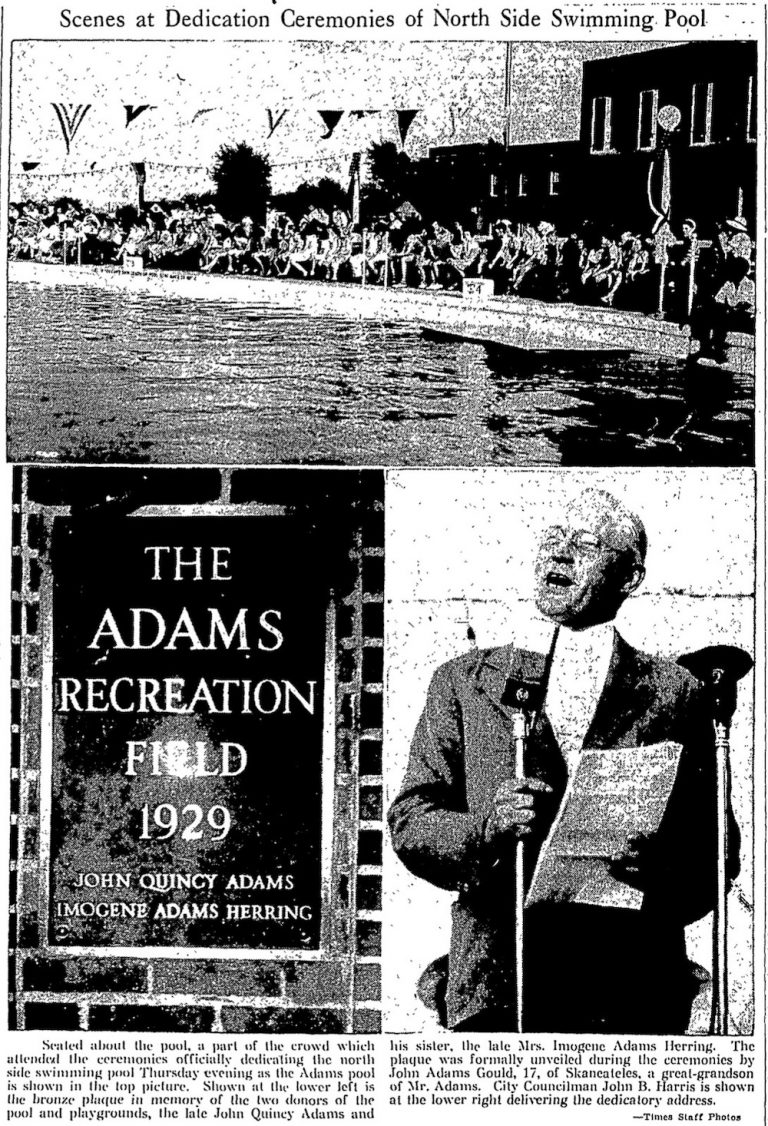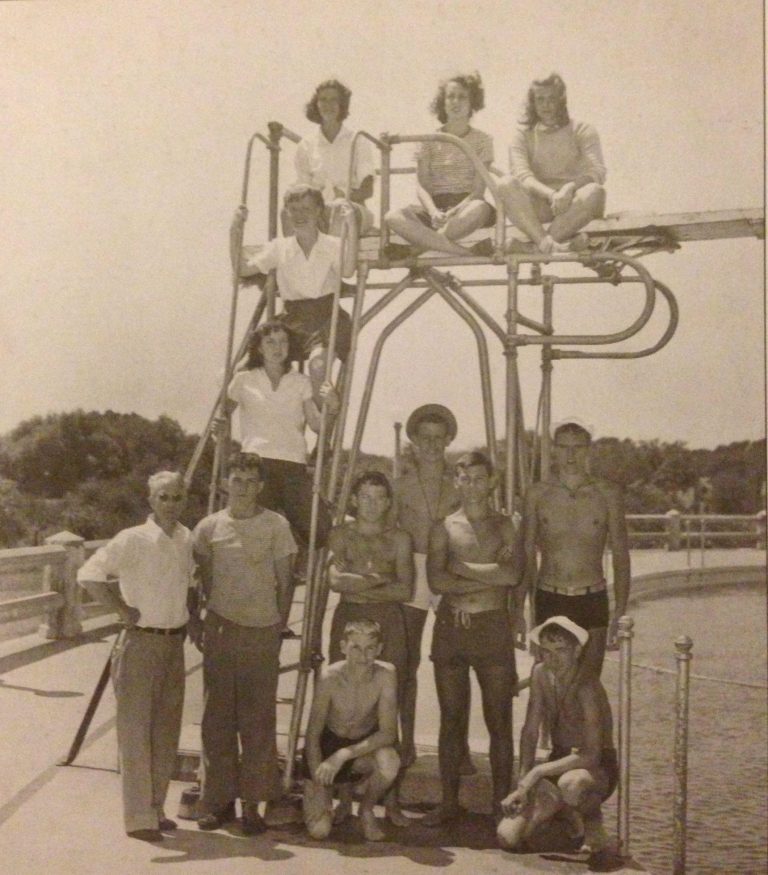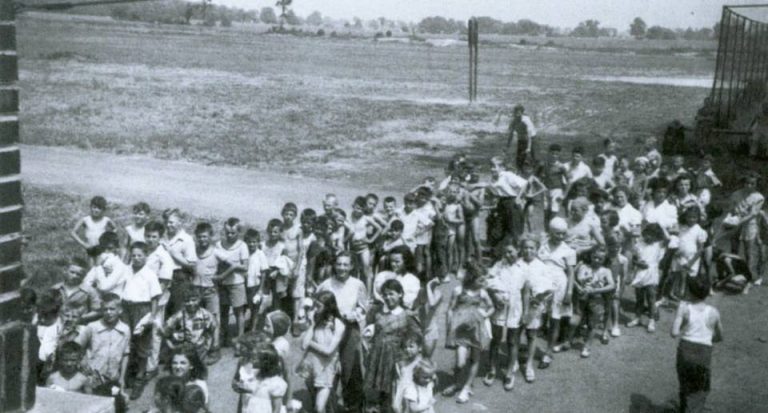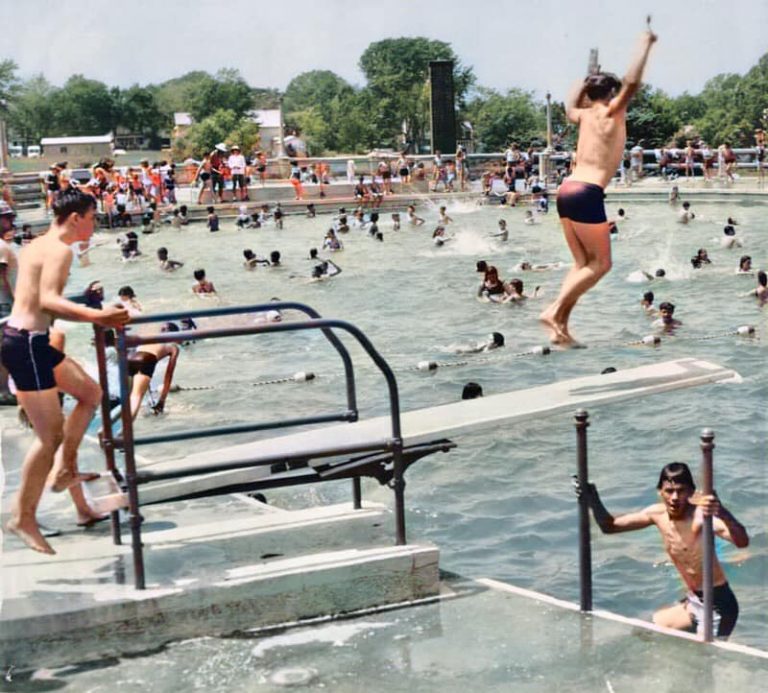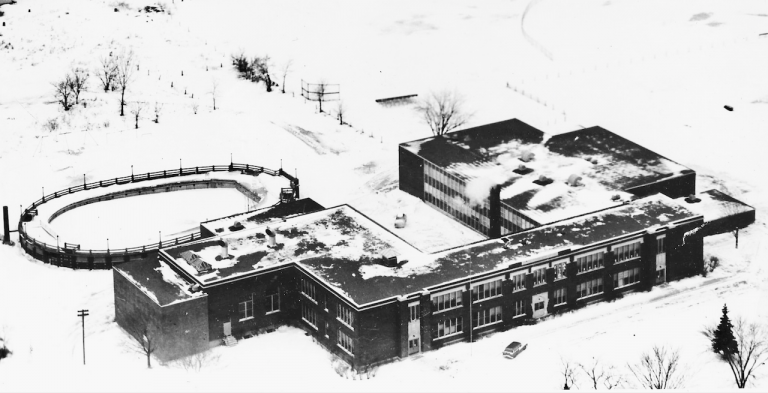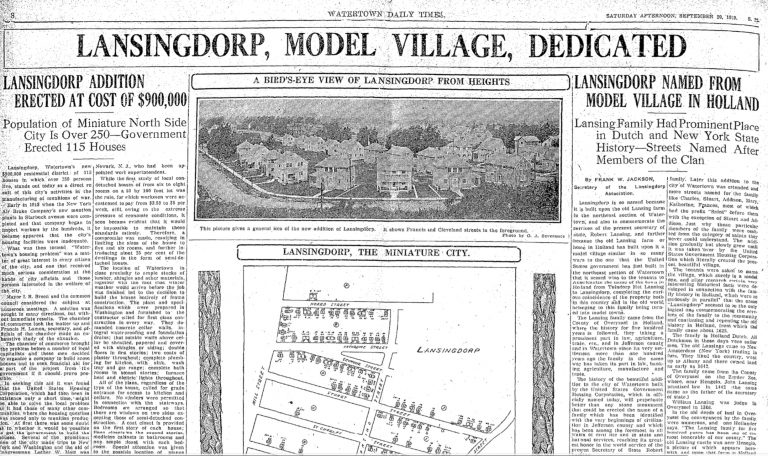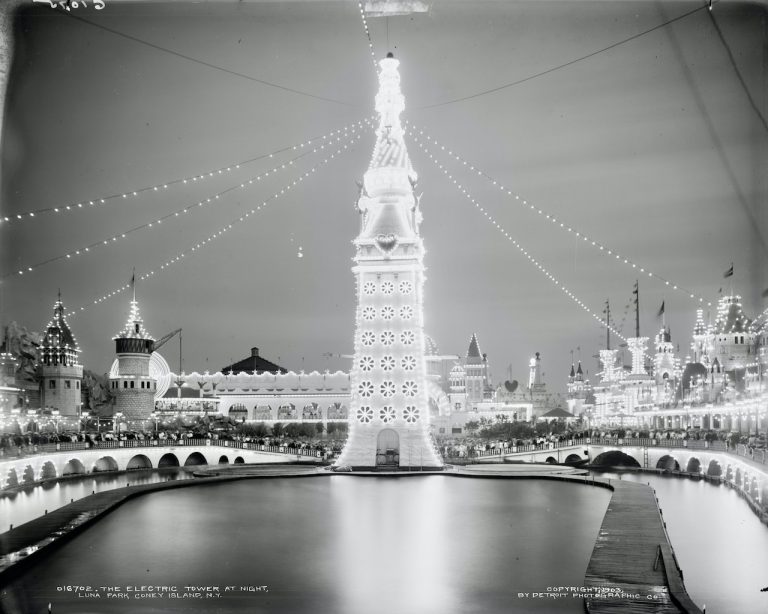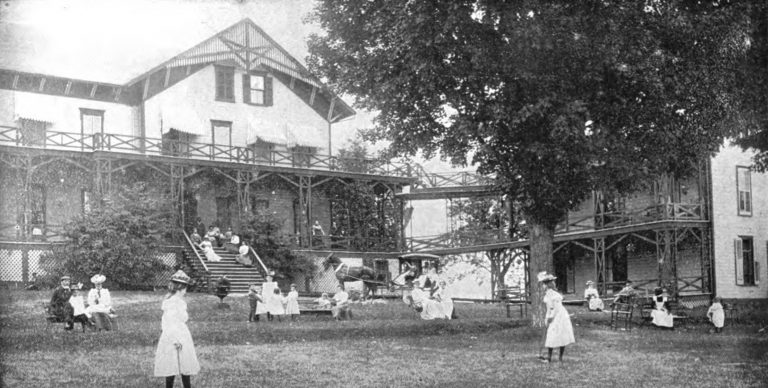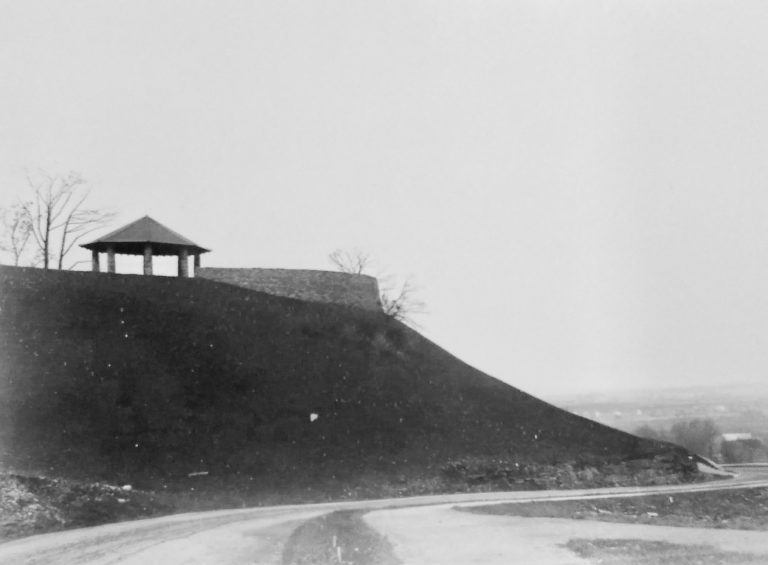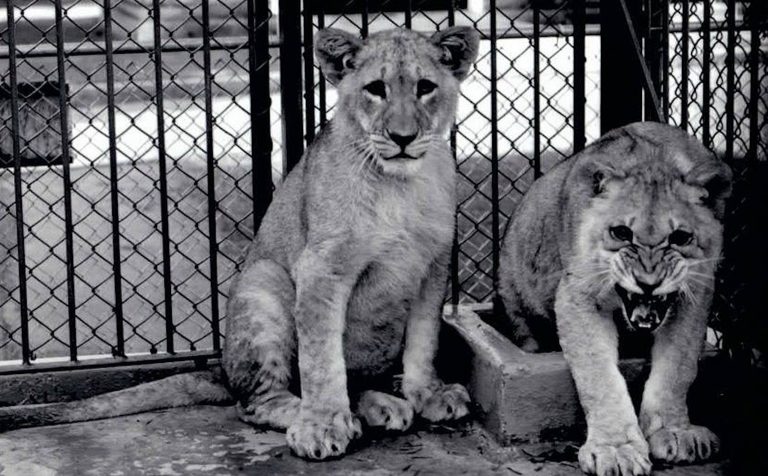John Adams Pool, aka North Side Pool/North Junior Pool
The John Adams pool was originally a gift to the city and would open in 1929, replacing the city’s other pool on the North Side, located several blocks away on St. Mary Street, not very far from the Lansing Street School. The St. Mary Street pool was gifted to the city along with the pool on Grand Avenue by J. B. Taylor around 1916. Taylor, who purchased the Sterling Mansion after his divorce from Emma Flower Taylor, had previously opened the pool at the mansion up to the public during the summer, with boys and girls visiting on different days of the week.
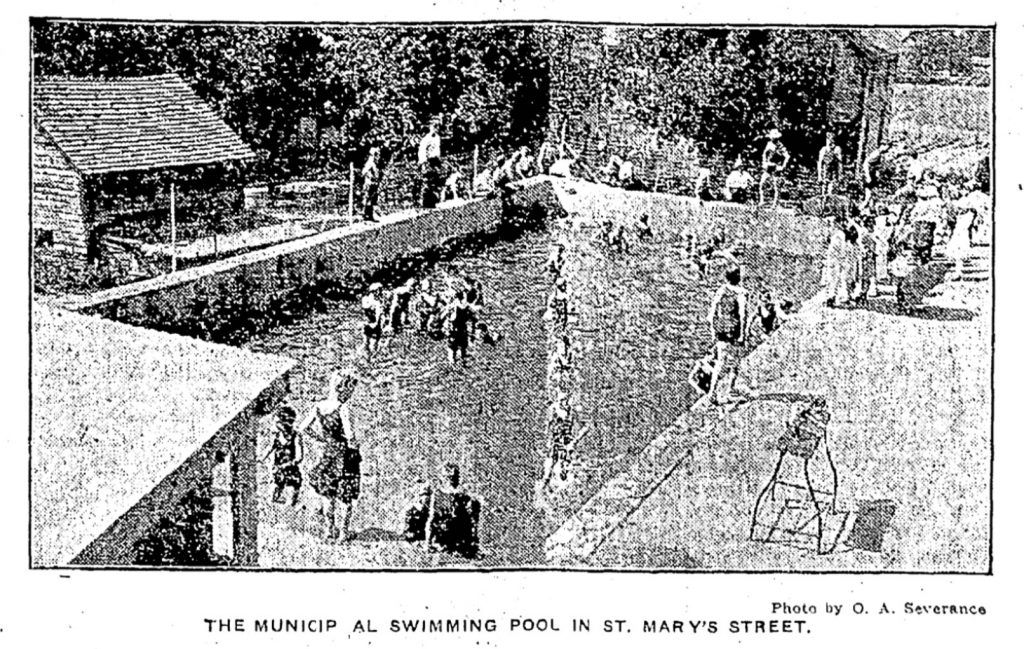
The John Adams pool, originally known as the North Side Pool until c.1940, was built within feet of North Jr. High School and wouldn’t start construction until May 0f 1929 with a deadline for completion in 90 days or less. The St. Mary Street pool was subsequently used for most of that season before being abandoned mid-August, when the new pool, referred to simply as North Side pool, opened. The city would have funds available to extend its first season into the second week of September that summer.
The following year, the North Side pool saw large crowds and an inter-pool meet against Thompson Park Pool, with over 500 people attending the event directed by William I. Graf, director of municipal recreation. The event, close throughout, ended in a tie. Just a few days later, a double-rescue occurred when a swimmer tried to save a 10-year-old girl sinking to the bottom, only to have the frightened girl clutch him in a stranglehold.
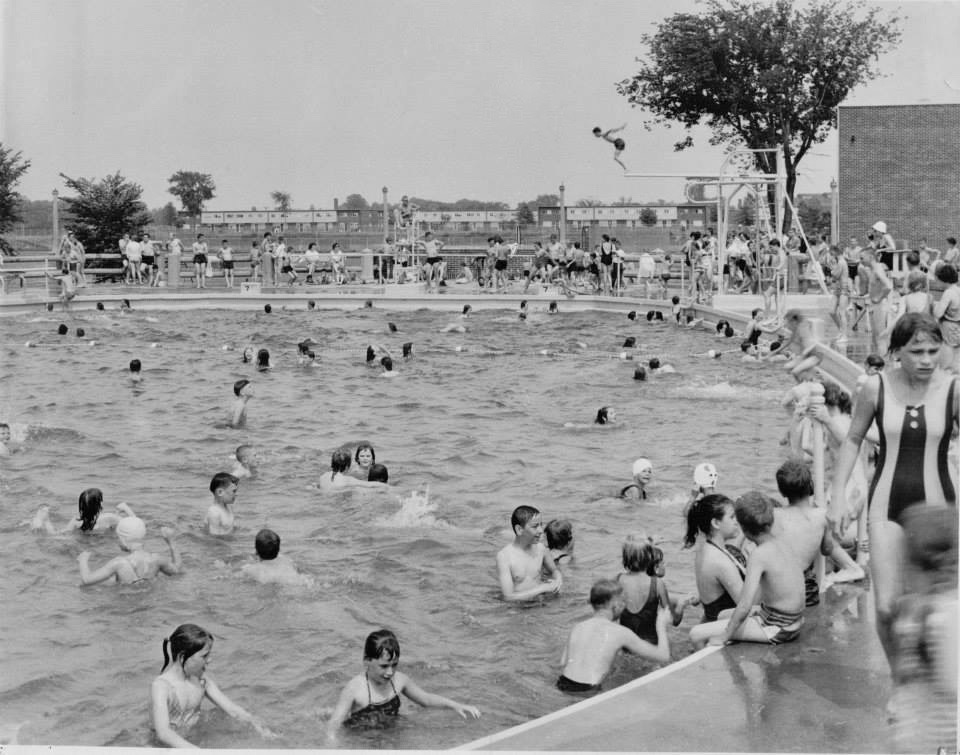
Several weeks later, Burton Minor, of Rutland Street, established what was believed to be a local record by swimming the North Side pool 202 times. Minor had recently been appointed swimming instructor at the Y. M. C. A. and swam a distance of 4.6 miles over three hours.
The last week of August saw the Times Northern New York Swimming Carnival held on the 27th. The event was revived after a two-year absence and expected to be the biggest of its kind in the area—and indeed it was, cramming nearly 1,000 people from all over Northern New York watching approximately 100 contestants perform in a number of age-restricted in men’s, women’s, boy’s and girl’s events.
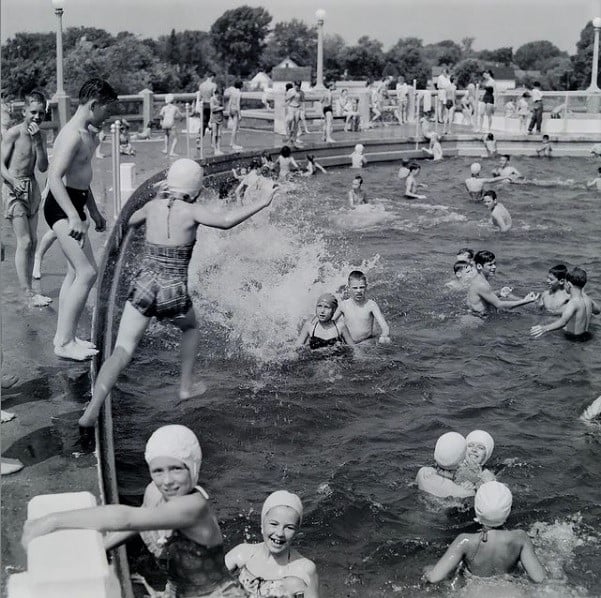
1931 saw a 200% increase in attendance at the two pools, the North Side surpassing registrants in four weeks than it had altogether over the 12 weeks the previous year. Graf credited the popularity of the pool for acting as a magnet for the city playground there and boosting its attendance, too. The summer of ’31 also saw several competitions between other cities, with swimmers from Syracuse and Oswego traveling to Watertown to take on the city’s best “mer-maids” and “mer-men.”
In years that followed, the city’s recreation department became very creative in holding various events at night, including old-fashioned bathing suit contests, bathing beauty contests, canoe-tilting contests, as well as an exhibit by an Olympic diver from Canada, Alfred Phillips. That performance drew 4,000 spectators to the North Side pool, and the Watertown Daily Times reported–
Watertown aquatic fans were treated to a spectacular fancy diving exhibition at the North Side swimming pool Friday evening when Alfred Phillips of Toronto, who finished fourth in the Los Angeles Olympic games in 1932, and Miss Marjorie Stoneburg, Canada’s women’s champion fancy diver, performed before a crowd of over 4,000.
The exhibition given by the pair who are considered among the outstanding fancy divers in North America, was by far the greatest ever given in Watertown. The two Canadian stars executed all of the difficult dives that are used in the outstanding meets of the country.
The evening was capped by several dance performances by the playgrounds and six amateur boxing matches from the various playgrounds.
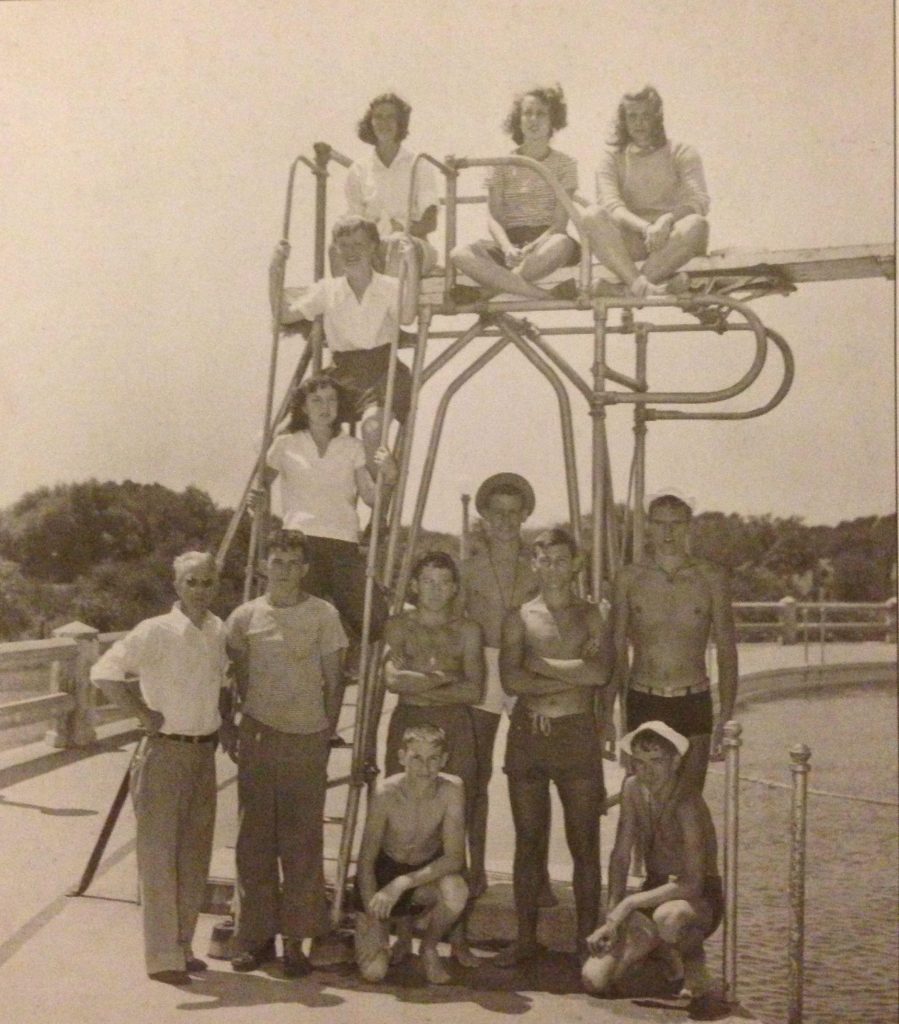
The 1940s would see the city pools continue to break attendance records. 1940 had a single attendance record of 1,400 for both pools, boosted by soldiers encamped in the park. 1941 saw the North Side pool officially dedicated to the late John Q. Adams, along with his sister, Imogene Adams Herring, who donated $40,000 and $10,000, respectively, toward its construction. The Times reported on the event on July 25–
In the presence of a crowd of more than 500 spectators, the North Side swimming pool in East Hoard street–the gift to the city of the late John Quincy Adams, former senior vice president of the Agricultural Insurance Company–was officially dedicated and named the Adams Pool Thursday evening.
(A) plaque, erected on the wall at the entrance to the pool, bears the following inscription: “The Adams Recreation Field, 1929, John Quincy Adams, Imogene Adams Herring.”
In 1928 Mr. Adams offered to build the North Side pool for the city and the offer was accepted with the request that the name of the donors be withheld from the public until after his death. The East Hoard Street site was selected and the work on the pool was started. The pool was completed late in the summer of 1929 and opened for the first time in June, 1930, without any ceremony.
Time after time effort was made to persuade Mr. Adams to reveal himself publicly as the pool’s benefactor, but each time said Mr. (John) Harris, he declined.
“Until the death of Mr. Adams Jan 20, 1940, less than a dozen residents of the city knew that Mr. Adams and his sister, Mrs. Herring, were the donors of the pool and the playground,” said Mr. Harris. “Mr. Adams was a modest man. He wanted no self-praise.”
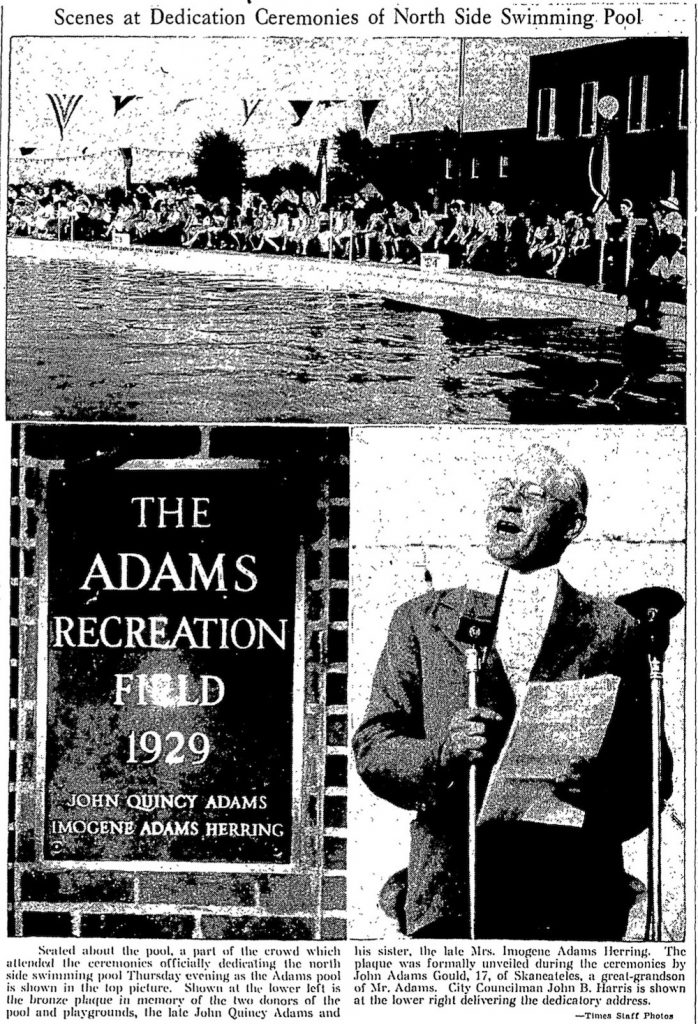
In 1974, the city began plans to add a third pool to the city’s west side, located at the Fairgrounds, after the city council, on the recommendation of City Manager Ronald G. Forbes, failed to accept a bid to modernize the existing pool’s filtering system. Forbes stated that the money might be better spent on new pools, including the Fairgrounds location and a replacement for the John Adams pool, the city’s largest at the time.
By late 1977, the pool would fall under the wrecking ball with the William J. Flynn pool opening down the hill and further from the school in 1980. The pool was closed in 2020, denying the north side a pool dating back to at least 1916. In July of 2022, it was announced that it may cost an estimated $3M to $4M. The lower bid would repair the pool, the higher bid would replace it, with both updating the bathhouse.
The new pool opened in the summer of 2024.
